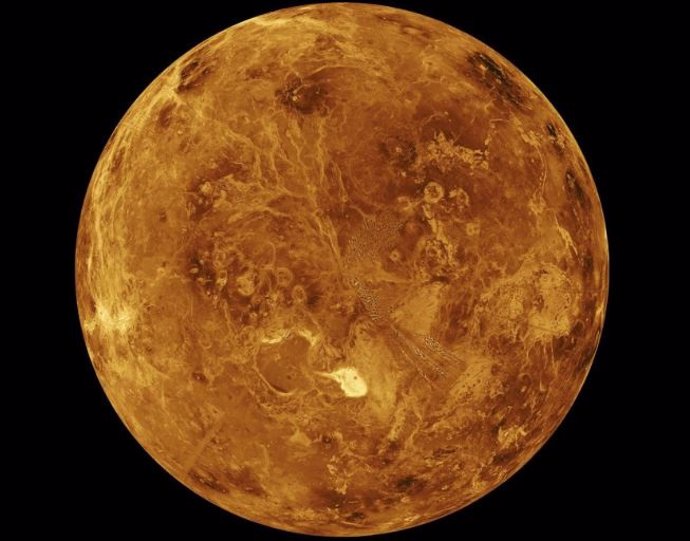Archive – Venus – NASA/JPL – Archive
Aug. 2 () –
Vast plateaus of Venus, known as tesseraemay have formed through processes similar to those that created Earth’s first continents billions of years ago.
New research led by Monash University and NASA has revealed that Venus, often considered Earth’s inhospitable twin, may share a surprising geological history with our own planet. The result is published in the journal Nature Geoscience.
“The study challenges our understanding of how planets evolve. We did not expect Venus, with its scorching surface temperature of 460°C and lack of plate tectonics, to have such complex geological features,” he explains. it’s a statement the study’s first author, Monash Professor Fabio Capitanio.
Using high-performance computer simulations and data from the Magellan spacecraft, researchers modeled the formation of Ishtar Terra, the largest plateau on Venus.
The results suggest that Ishtar Terra and other tiles may have emerged from the planet’s hot interior through a process similar to the formation of Earth’s cratons, the ancient cores of our continents.
“This discovery provides a fascinating new perspective on Venus and its possible links to the early Earth,” said Associate Professor Capitanio.
“The features we find on Venus are surprisingly similar to the primitive continents of the Earthsuggesting that Venus’s past dynamics may have been more similar to those of Earth than previously believed.”
Understanding how these “continents” formed on Venus could shed light on the evolution of rocky planets, including our own.
Earth’s cratons hold crucial clues about the emergence of topography, atmosphere, and even life.
“By studying similar features on Venus, We hope to unravel the secrets of Earth’s early history” said Professor Capitanio.
“Our research has paved the way for future missions to Venus, such as DAVINCI, VERITAS and EnVision. These missions will provide more information about the geological history of Venus and its connection to Earth.”















Add Comment